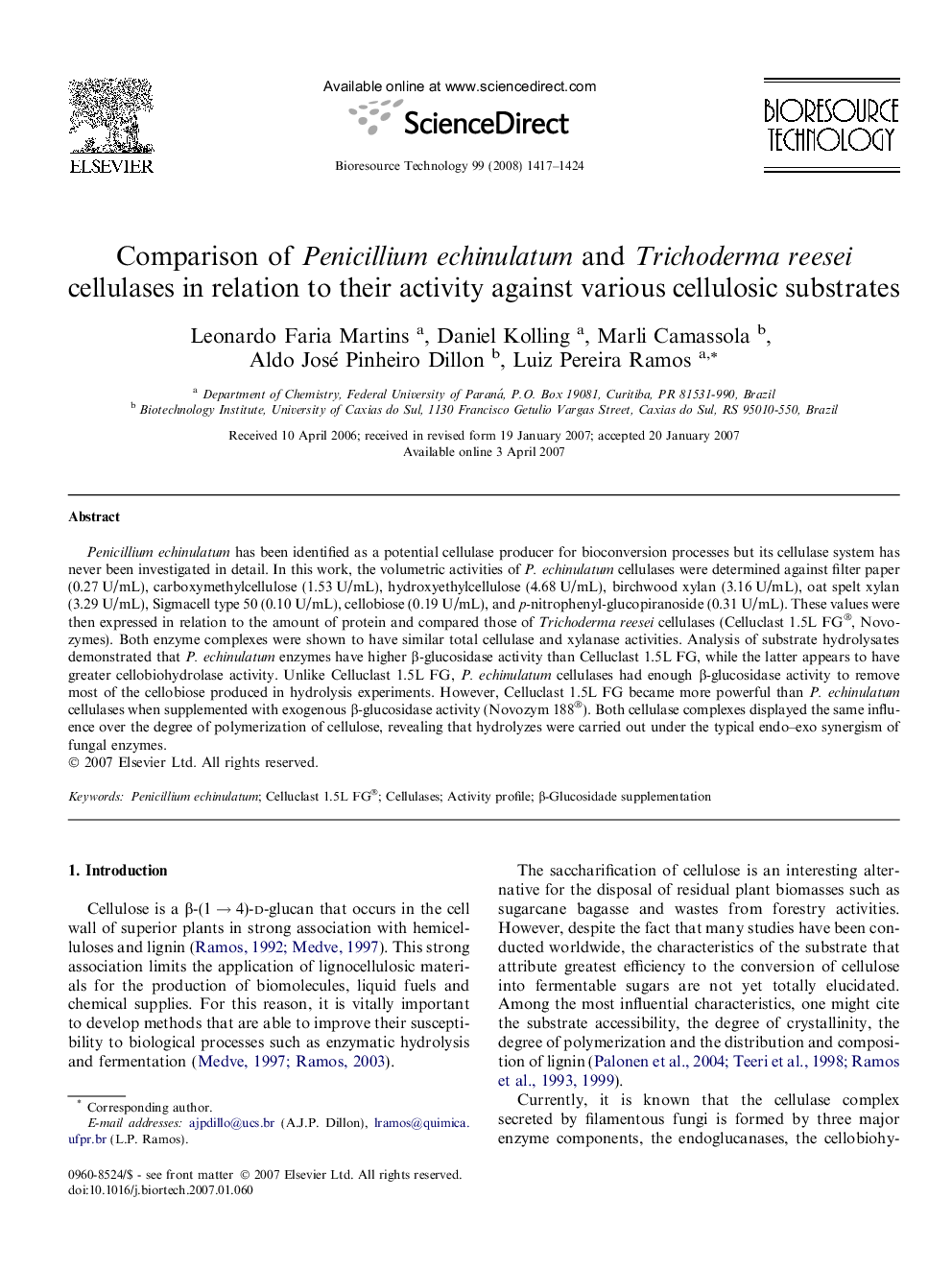| Article ID | Journal | Published Year | Pages | File Type |
|---|---|---|---|---|
| 685429 | Bioresource Technology | 2008 | 8 Pages |
Penicillium echinulatum has been identified as a potential cellulase producer for bioconversion processes but its cellulase system has never been investigated in detail. In this work, the volumetric activities of P. echinulatum cellulases were determined against filter paper (0.27 U/mL), carboxymethylcellulose (1.53 U/mL), hydroxyethylcellulose (4.68 U/mL), birchwood xylan (3.16 U/mL), oat spelt xylan (3.29 U/mL), Sigmacell type 50 (0.10 U/mL), cellobiose (0.19 U/mL), and p-nitrophenyl-glucopiranoside (0.31 U/mL). These values were then expressed in relation to the amount of protein and compared those of Trichoderma reesei cellulases (Celluclast 1.5L FG®, Novozymes). Both enzyme complexes were shown to have similar total cellulase and xylanase activities. Analysis of substrate hydrolysates demonstrated that P. echinulatum enzymes have higher β-glucosidase activity than Celluclast 1.5L FG, while the latter appears to have greater cellobiohydrolase activity. Unlike Celluclast 1.5L FG, P. echinulatum cellulases had enough β-glucosidase activity to remove most of the cellobiose produced in hydrolysis experiments. However, Celluclast 1.5L FG became more powerful than P. echinulatum cellulases when supplemented with exogenous β-glucosidase activity (Novozym 188®). Both cellulase complexes displayed the same influence over the degree of polymerization of cellulose, revealing that hydrolyzes were carried out under the typical endo–exo synergism of fungal enzymes.
